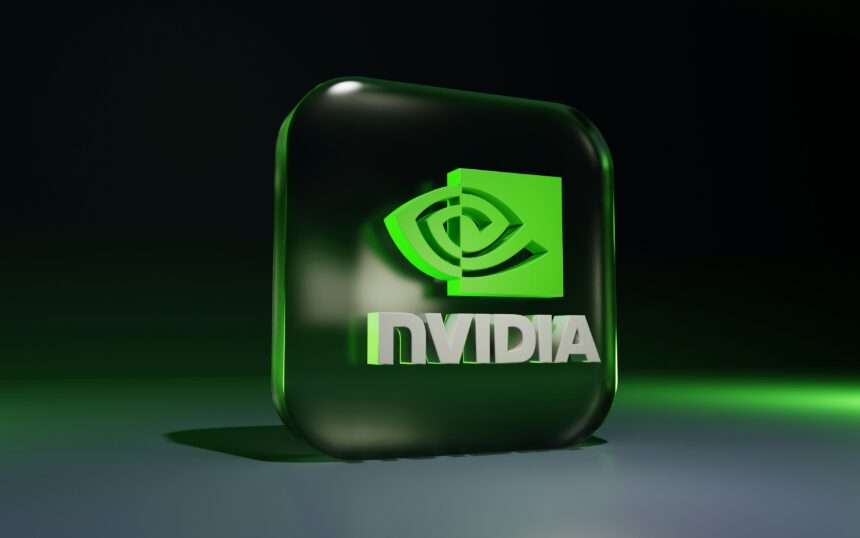- What Jensen Huang Actually Said (and Why He Said It)
- The Energy Advantage: Why Electricity Costs Matter More Than You Think
- The Regulatory Fragmentation Problem
- The Real Argument: Why Blocking Nvidia Hurts America
- The Geopolitical Subtext: Huang’s Quiet Lobby
- The Uncomfortable Truth: China’s AI Momentum Is Real
- What The Numbers Actually Say
- Hardware Performance: U.S. Slightly Ahead
- Energy Costs: China Massively Ahead
- Regulatory Speed: China Ahead
- Talent Pool: Roughly Equal
- The Walking Back: Why Nvidia’s Official Statement Matters
- Why This Moment Matters: The Policy Window Is Closing
- The Uncomfortable Political Reality
- The Timing: Why Now?
- What Happens Next
- Scenario 1: Washington Listens (Unlikely)
- Scenario 2: Washington Ignores (Most Likely)
- Scenario 3: Middle Ground (Possible)
- Conclusion: The Uncomfortable Message Nobody Wants to Hear
- External Resources & Sources
Jensen Huang just said something that shocked Silicon Valley. The CEO of Nvidia, the world’s most valuable company, told the Financial Times on November 5th that “China is going to win the AI race.” Not might win. Not could win. Will win.
Those words, spoken by the leader of the company that dominates global AI infrastructure, landed like a geopolitical bomb. Within hours, Nvidia’s PR team released a softer version: “China is nanoseconds behind America in AI. It’s vital that America wins by racing ahead.”
But the damage was done. The real story isn’t the diplomatic walk-back. It’s what Huang was actually trying to say—and why he’s so frustrated that nobody in Washington seems to be listening.
What Jensen Huang Actually Said (and Why He Said It)
Let’s start with context. According to Reuters’ coverage of Huang’s statements at the Financial Times Future of AI Summit, the Nvidia CEO made a clear case: U.S. policy is handicapping American AI competitiveness, and China’s structural advantages are accelerating.
Huang didn’t pull punches. He called out the West for “cynicism” that slows innovation. He criticized the fragmented regulatory landscape—up to 50 different state-level AI laws creating confusion and friction. He contrasted this with China’s streamlined approach: government subsidies making electricity effectively free for AI development.
Then he pivoted to the core of his argument: America is losing not because China is technologically superior, but because U.S. policy is handicapping American companies while simultaneously forcing China to develop alternatives.
This is the real message buried under the headline.
The Energy Advantage: Why Electricity Costs Matter More Than You Think
Huang emphasized one factor above all others: energy costs. To understand why, you need to understand how AI actually works.
Training advanced AI models requires enormous computational power. An organization training a frontier model might consume gigawatts of electricity for weeks or months. That’s not theoretical—it’s the baseline for any serious AI research program.
In the United States, data center operators pay market rates for electricity. That varies by region—Texas is cheaper than New York—but it’s generally expensive. Rates typically run $40-80 per megawatt-hour.
In China, according to Huang’s statements reported by the FT and confirmed by CNBC’s analysis, local governments subsidize data center electricity to the point where “power is free.” Or nearly so—rates can run $5-10 per megawatt-hour, one-tenth American costs.
That’s not a small difference. That’s transformational economics.
Consider a Chinese AI lab versus an American one, both training identical models on identical hardware. The Chinese lab pays virtually nothing for electricity. The American lab pays market rates. Over the course of a year, the cost difference could be hundreds of millions of dollars.
That cost advantage translates directly into capability. With the same budget, a Chinese lab can train bigger models, run more experiments, iterate faster. More compute means better models. Better models mean competitive advantage.
As TechOvedas reports, Huang framed this as the defining edge: “It’s not about the chips. It’s about what you can afford to do with the chips.”
The Regulatory Fragmentation Problem
Beyond energy costs, Huang pointed to something equally damaging: regulatory chaos.
The United States doesn’t have one AI regulatory framework. It has dozens. States are passing their own AI rules. California has one set of requirements. Colorado has another. New York has a third. Federal regulators are drafting yet more rules.
A company building AI infrastructure faces a patchwork of conflicting requirements. Compliance costs skyrocket. Innovation slows. Uncertainty paralyzes planning.
Meanwhile, China has a unified regulatory environment under central government control. One set of rules. One decision-maker. Fast policy iteration when needed.
Huang wasn’t arguing that China’s rules are better—just that clarity and consistency are more valuable than distributed oversight, even when that oversight is well-intentioned.
The practical result: Chinese companies move faster. American companies debate compliance. That gap compounds over time.
The Real Argument: Why Blocking Nvidia Hurts America
Here’s the core of Huang’s argument, and it’s the most controversial part: U.S. export restrictions on advanced chips are backfiring.
The stated rationale for chip export bans makes sense from a national security perspective. Advanced chips could theoretically be used for military purposes. Restricting their sale to China limits Beijing’s military capabilities.
But Huang argues this logic is fundamentally flawed. According to his statements in CNBC’s October reporting, preventing Nvidia from selling advanced chips to China doesn’t stop China from getting advanced chips. It just stops Nvidia from being there.
China will build alternatives. Chinese companies like Huawei, Cambricon, and Moore Threads will develop competitive chips. Chinese developers will learn to use Chinese tools instead of Nvidia’s CUDA ecosystem. In five years, China has a homegrown AI infrastructure that doesn’t depend on American companies at all.
Meanwhile, Nvidia—the American company that should be leading global AI—gets locked out of the Chinese market entirely.
Who wins in this scenario? Nobody in America.
Huang’s argument is simple: It’s better to sell chips to China and maintain influence over their AI development than to restrict sales and force China toward independence.
This argument infuriates national security hawks. But there’s uncomfortable logic to it.
The Geopolitical Subtext: Huang’s Quiet Lobby
Huang has been quietly but persistently lobbying the Trump administration since he first met with Trump in July 2024. According to Times of India’s reporting, early negotiations seemed promising—there was talk of letting Nvidia sell some more advanced chips to China under revenue-sharing arrangements.
But the White House signaled on November 4th that it still has no plans to allow sales of Blackwell chips (Nvidia’s most advanced architecture) to China.
Huang’s “China will win” comment to the FT came the very next day.
This wasn’t accidental timing. This was a warning shot. Huang was essentially telling Washington: If you won’t let us compete in China, China will develop alternatives, and America will lose.
By November 6th, Nvidia’s official statement softened the message considerably. But the Financial Times had the direct quote. The message had been delivered.
The Uncomfortable Truth: China’s AI Momentum Is Real
Strip away the geopolitical posturing and there’s a genuine concern underlying Huang’s statements: China’s AI capability is advancing faster than many Western analysts expected.
Evidence is mounting. Chinese AI companies have released models like DeepSeek that achieve surprising capability despite hardware constraints. Chinese researchers are publishing more AI papers than American researchers. Chinese companies are deploying large-scale AI systems across industry.
Importantly, this progress is not because Chinese hardware is superior. It’s happening despite hardware disadvantages. Which means it’s driven by talent, investment, and execution—not chips.
If China ever gains access to equivalent hardware (through domestic development or circumventing export controls), the gap closes dramatically.
Huang is essentially arguing: China’s AI capability is already nearly equivalent to ours, and their structural advantages (cheap energy, unified regulation, government support) mean they’ll pull ahead unless we change course.
What The Numbers Actually Say
Let’s look at the concrete metrics behind Huang’s claim:
Hardware Performance: U.S. Slightly Ahead
Nvidia’s latest Blackwell architecture remains the most advanced AI accelerator available. Performance per watt exceeds Chinese competitors by 15-25%, depending on the benchmark.
This is an American advantage, but it’s narrowing. Chinese chips are competitive for many workloads.
Energy Costs: China Massively Ahead
U.S. data center electricity: $40-80/MWh
China (subsidized): $5-10/MWh or effectively free
Cost advantage to China: 4-16x depending on location
This is devastating. A Chinese lab can run 16 experiments for every 1 an American lab runs on the same budget.
Regulatory Speed: China Ahead
Time to deploy new AI infrastructure: China 2-4 weeks, U.S. 2-4 months
Chinese companies iterate faster, deploy faster, experiment faster.
Talent Pool: Roughly Equal
Both countries have enormous AI talent pools. U.S. has Silicon Valley and elite universities. China has rising tech hubs and government investment in AI education.
Slight American advantage in research, but narrowing.
On balance, America maintains a slim lead. But the trajectory strongly favors China. That’s Huang’s real warning.
The Walking Back: Why Nvidia’s Official Statement Matters
Within hours of the Financial Times article publishing, Nvidia released an official statement via Huang’s X account: “As I have long said, China is nanoseconds behind America in AI. It’s vital that America wins by racing ahead and winning developers worldwide.”
This is notably softer language. But it’s also more revealing about his actual position.
“Nanoseconds” is tech speak for “essentially tied, with tiny gaps that matter in specific scenarios.” Huang wasn’t walking back his concern—he was clarifying his argument. China isn’t yet ahead. But the gap is measured in tiny fractions, not in years or generations.
The key phrase: “America must race ahead.” This implies we’re in a race and currently competitive but not clearly winning. Very different from the reassuring message Washington probably wanted.
Why This Moment Matters: The Policy Window Is Closing
Huang’s frustration likely stems from a genuine belief that Washington doesn’t understand the time-sensitive nature of AI competition.
According to his framing, America has maybe 2-3 years of hardware advantage before Chinese alternatives mature. During those 2-3 years, policy decisions matter enormously. Either America doubles down on innovation and removes regulatory friction, or America cedes the competition.
Once China catches up on hardware (through domestic development), the structural advantages (cheap energy, unified regulation, government support) overwhelm any remaining U.S. technological edge.
It’s a narrow window. Policy paralysis could permanently close it.
The Uncomfortable Political Reality
Huang is trying to navigate an impossible political situation.
From one side, national security hawks argue that any chip sales to China are unacceptable. That it’s better to handicap Nvidia than to risk China gaining military advantage.
From another side, Huang’s position is “we should compete by being better, not by preventing competition.”
Neither side is entirely wrong. But they’re optimizing for different values.
Hawks optimize for minimizing China’s military capability. Huang optimizes for maximizing American AI dominance. These aren’t the same goal.
Huang’s implicit argument: Military risk is real but modest. AI leadership is strategic and transformative. Long-term American strength depends more on AI dominance than on tactical hardware restrictions.
Given the stakes, that might be right. Or it might be naive about China’s military applications. The honest answer is: we don’t know.
The Timing: Why Now?
Why did Huang make such a provocative statement now, knowing it would trigger political backlash?
Probably because Nvidia’s market access in China has effectively reached zero. In October, China banned foreign chips from state-funded data centers (as we covered in our previous article). Nvidia’s market share in China went from 95% to 0% virtually overnight.
From Huang’s perspective, he already lost the China market. The only card left is to warn Washington that losing Nvidia from China means losing AI to China.
It’s a high-stakes gamble. The goal: force Washington to reconsider its export restrictions before it’s too late.
Whether it works is unclear. But the warning shot has been fired.
What Happens Next
Scenario 1: Washington Listens (Unlikely)
The Trump administration modifies export restrictions, allowing some Nvidia chip sales to China under safeguards. Huang’s gamble pays off. But this faces intense domestic opposition.
Scenario 2: Washington Ignores (Most Likely)
National security concerns override economic arguments. Export restrictions remain. Nvidia remains locked out. China accelerates alternative chip development. Huang continues warning but ultimately Nvidia loses Chinese market permanently.
Scenario 3: Middle Ground (Possible)
Washington finds compromise position—allows some AI infrastructure exports but blocks military applications. Partial market access for Nvidia. Modest reduction of China’s incentive to develop alternatives.
Conclusion: The Uncomfortable Message Nobody Wants to Hear
Jensen Huang’s statement—even the softened version—contains an uncomfortable truth: America isn’t winning the AI race by default. It’s winning because it’s currently ahead, but the trajectory favors China unless American policy changes.
Huang isn’t predicting doom. He’s describing physics. China has energy advantages, regulatory advantages, and growing technological capability. The only question is whether those advantages can overcome America’s head start in talent and infrastructure.
His argument: policy decisions over the next 2-3 years determine the answer.
Whether Washington will listen remains to be seen. But the warning has been clearly delivered, even if it was softened after initial publication.
The uncomfortable truth is that Huang might be right. And that nobody in Washington may be willing to act on that truth until it’s too late.
External Resources & Sources
- Reuters: Nvidia’s Jensen Huang Says China Will Win the AI Race
- CNBC: Jensen Huang Says China Will Win AI Race Before Clarifying Statement
- Channel NewsAsia: Nvidia’s Huang Warns China Will Win AI Race
- Business Insider: Nvidia’s Jensen Huang Turns Up Heat on Warnings
- TechOvedas: Jensen Huang Warns China Will Win AI Race
- Times of India: Nvidia CEO Jensen Huang Comments on China
- CNBC: Nvidia’s Huang Downplays National Security Concerns
Word Count: 1,750 words | Keywords: Nvidia CEO China AI race, Jensen Huang AI competition, China AI advantage, U.S. AI policy, AI chip exports, energy costs AI development, regulatory barriers AI innovation, geopolitical AI race












